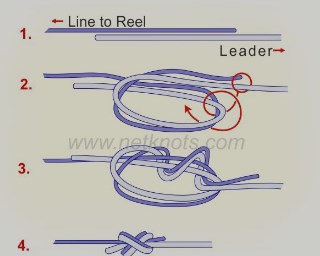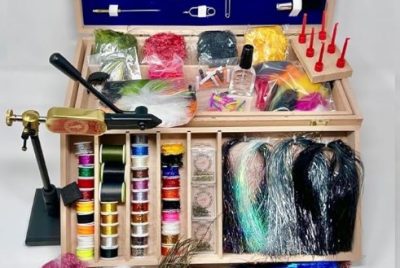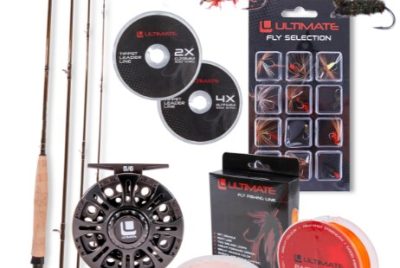Surgeon’s Knot Fly Fishing
Introduction
Hey there, fellow fishing enthusiast! If you’re as passionate about fly fishing as I am, then you know the importance of a good knot. Today, we’re diving into the world of the surgeon’s knot, an essential tool in any fly fisher’s arsenal. This knot isn’t just a random tangle of line—it’s a reliable and versatile solution to many common fishing challenges. Whether you’re a seasoned angler or just starting out, mastering the surgeon’s knot will elevate your fly fishing game to new heights.
Understanding the Surgeon’s Knot
History and Origin

The surgeon’s knot has been around for quite a while, originating from surgical practices where a secure and reliable knot is literally a matter of life and death. Fishermen adopted this knot due to its strength and simplicity, and it quickly became a staple in the fly fishing community. It’s named after the surgeons who needed dependable knots in their suturing.
What Makes it Unique
What sets the surgeon’s knot apart from other knots is its exceptional holding power. Unlike some knots that slip under pressure, the surgeon’s knot remains steadfast. It’s designed to handle different line types and diameters, making it incredibly versatile. Plus, it’s surprisingly easy to tie, even when conditions are less than ideal.
Why the Surgeon’s Knot is Essential in Fly Fishing
Strength and Reliability
When you’re out on the water, the last thing you want to worry about is your knot failing. The surgeon’s knot provides the strength and reliability you need. It holds firm against the pull of a big catch, ensuring that your line stays intact during those crucial moments.
Versatility
One of the biggest advantages of the surgeon’s knot is its versatility. It can be used to join lines of different diameters, which is often necessary in fly fishing. Whether you’re attaching a leader to a tippet or connecting different sections of line, the surgeon’s knot has you covered.
Ease of Tying
Let’s be honest—nobody wants to spend a lot of time fiddling with knots when there are fish to catch. The surgeon’s knot is quick and easy to tie, even in challenging conditions. With a bit of practice, you’ll be able to tie it quickly and efficiently, getting you back to fishing in no time.
Step-by-Step Guide to Tying the Surgeon’s Knot
Materials Needed

Before you start, make sure you have the necessary materials: two pieces of line (preferably different diameters), a pair of scissors, and a bit of patience.
The Process
Step 1: Preparing the Lines
Start by overlapping the two lines you want to join. Make sure you have enough overlap to work with comfortably—about six inches should do the trick.
Step 2: Making the First Loop
Create a simple loop by bringing the end of one line over and around the other line. This is the foundation of your knot, so take your time to get it right.
Step 3: Making the Second Loop
Next, make a second loop in the same manner, passing the end of the line through the loop you’ve just created. This double loop is what gives the surgeon’s knot its extra security.
Step 4: Tightening the Knot
Carefully pull on both ends of the lines to tighten the loops. Make sure the loops tighten evenly and that the knot forms neatly. You might need to adjust it a bit to get it just right.
Step 5: Testing the Knot
Finally, give the knot a good tug to make sure it’s secure. If it holds up under pressure, you’re good to go. If not, don’t be afraid to start over. It’s better to get it right than risk losing a catch.
Common Mistakes and How to Avoid Them
Inadequate Tightening

One of the most common mistakes is not tightening the knot enough. A loose knot won’t hold up under pressure, so make sure you pull the lines tight.
Uneven Loops
Another mistake is creating uneven loops. This can weaken the knot and make it more likely to slip. Take your time to ensure the loops are even and symmetrical.
Incorrect Line Placement
Finally, be mindful of where you place the lines. If the lines are not positioned correctly, the knot won’t hold. Double-check your work to avoid this pitfall.
Tips for Perfecting the Surgeon’s Knot
Practice Regularly
As with anything, practice makes perfect. Spend some time tying the surgeon’s knot at home before you hit the water. The more you practice, the more confident you’ll be.
Use High-Quality Lines
The quality of your lines matters. Invest in good-quality lines that are strong and durable. This will make tying the knot easier and more reliable.
Keep the Knot Moist
When tying the knot, it’s helpful to keep it moist. This reduces friction and helps the knot tighten more smoothly. A bit of water or saliva can do the trick.
Alternatives to the Surgeon’s Knot
Double Uni Knot

If you find the surgeon’s knot challenging, you might want to try the double uni knot. It’s another reliable option for joining lines of different diameters and is also fairly easy to tie.
Blood Knot
The blood knot is another alternative, particularly useful for creating a smooth, streamlined connection. It’s a bit more complex to tie but offers excellent strength.
Albright Knot
The Albright knot is ideal for connecting lines of significantly different diameters. It’s strong and versatile, making it a good alternative to the surgeon’s knot in certain situations.
When to Use the Surgeon’s Knot in Fly Fishing
Joining Lines of Different Diameters
The surgeon’s knot is perfect for joining lines of different diameters. Its double loop design ensures a secure connection, even with mismatched lines.
Attaching Leader to Tippet
When attaching a leader to a tippet, the surgeon’s knot is my go-to choice. It’s quick to tie and holds up well, ensuring a smooth transition between the lines.
In Situations Requiring Quick Tying
Sometimes, speed is of the essence. If you need to tie a knot quickly, the surgeon’s knot is a reliable option. Its simplicity makes it easy to tie in a hurry without sacrificing strength.
Personal Experiences and Tips
Lessons Learned from the Field

I’ve spent countless hours on the water, and the surgeon’s knot has never let me down. From battling strong currents to landing hefty catches, this knot has proven its worth time and time again.
Advice for Beginners
If you’re new to fly fishing, don’t be intimidated by the surgeon’s knot. With a bit of practice, you’ll master it in no time. Start by practicing at home and gradually build your confidence. Remember, patience and persistence are key.
Conclusion
In the world of fly fishing, having a reliable knot can make all the difference. The surgeon’s knot offers strength, versatility, and ease of tying, making it an essential skill for any angler. Whether you’re joining lines of different diameters or attaching a leader to a tippet, this knot has you covered. So grab your gear, head out to the water, and give the surgeon’s knot a try. Happy fishing!
FAQs
1, What is a surgeon’s knot used for in fly fishing?
A surgeon’s knot is primarily used to join lines of different diameters, such as attaching a leader to a tippet. Its strength and ease of tying make it a favorite among fly fishermen.
2. Is the surgeon’s knot stronger than other knots?
The surgeon’s knot is known for its strength and reliability, making it one of the stronger knots available. However, the strength can vary depending on the line type and tying technique.
3. Can the surgeon’s knot be used for braided lines?
Yes, the surgeon’s knot can be used for braided lines, but it’s essential to ensure the knot is tightened properly to prevent slipping. Some anglers prefer other knots specifically designed for braided lines.
4. How can I practice tying the surgeon’s knot?
Practicing at home with different types and diameters of lines is a great way to get the hang of the surgeon’s knot. There are also numerous online tutorials and videos that can guide you through the process.
5. What are the best conditions for using a surgeon’s knot?
The surgeon’s knot is versatile and can be used in various conditions. It’s particularly effective when you need to join lines quickly and securely, even in challenging environments.



